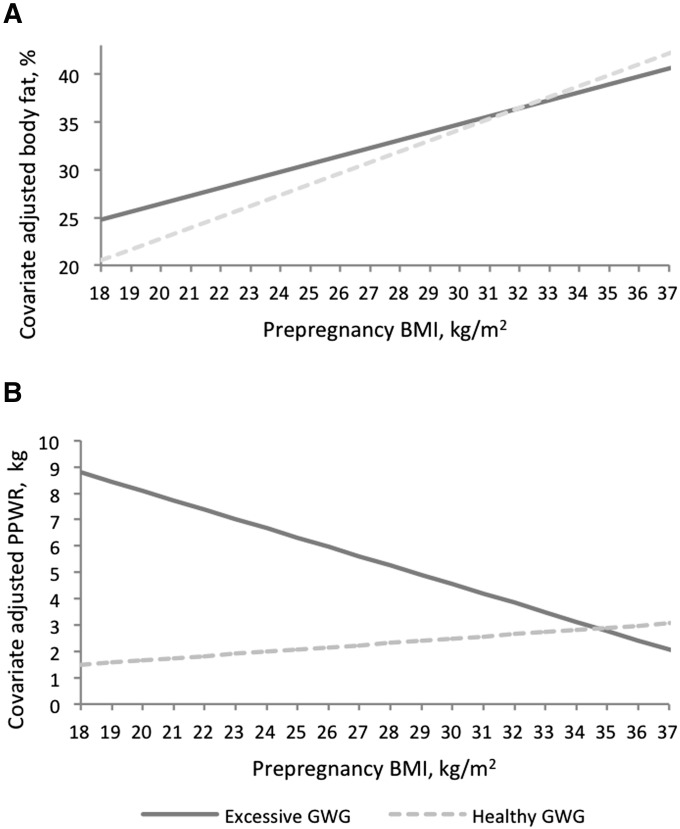FIGURE 2.
Effects of GWG on covariate-adjusted predicted percentages of body fat at 7 y postpartum (A) and weight changes from prepregnancy to 7 y postpartum (PPWR) (B) by prepregnancy BMI in African American and Dominican women from the Bronx and Northern Manhattan (n = 302). Effects of excessive GWG on maternal outcomes varied by prepregnancy BMI (in kg/m2) (P-interaction < 0.1). Effects shown are predicted estimates from multivariable linear regression models for the percentage body fat and long-term weight retention by maternal prepregnancy BMI adjusted for covariates. Results presented for the model were adjusted for maternal education, age, parity, race, receipt of public assistance, report of food insecurity in pregnancy, prenatal demoralization, gestational age at delivery, and interim pregnancies between the index pregnancy and 7 y postpartum. Predicted estimates are shown for approximately the 5th to 95th percentiles of prepregnancy BMI (18–37) in the study population. GWG, gestational weight gain; PPWR, postpartum weight retention.

